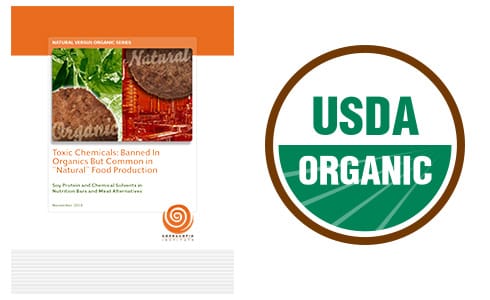
The difference between a food with the “organic” seal and a food claiming to be “natural” is vast.
Simply put, organic food production is regulated by third party, government-accredited certifying agents, who ensure that farmers and processors follow a strict set of federal standards aimed at promoting ecological sustainability and avoiding materials that are hazardous to the environment and human health.
With the exception of meat and poultry, so-called “natural” foods are not regulated and have no uniform set of standards to which they must adhere (and oversight on natural meat is ridiculously lax). Usually, corporate marketing departments determine whether a food should carry the “natural” label on its package, as a marketing tool to appeal to health conscious and environmentally aware consumers.
The Cornucopia Institute’s Natural vs. Organic Project consists of a collection of case studies showcasing the benefits of foods that bear the “USDA Organic” seal.
VEGGIE BURGERS, MEAT ALTERNATIVES AND NUTRITION BARS:
Banned in Organics: Toxic Chemicals Common in “Natural” Food Production Hazardous Solvents in Soy Protein Processing – Another Reason to Buy Organic
BREAD:
Sara Lee’s “Earthgrains” vs. Organic (2010)

